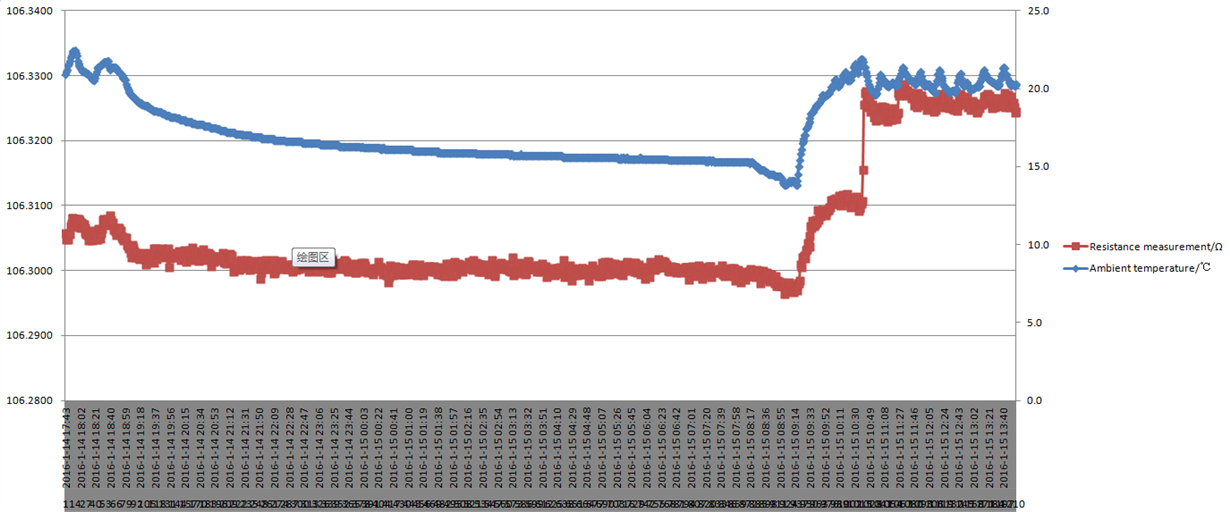Hello,
I would like to consult on how long-term stability and temperature characteristics of the system designed TIDU145 document?
I made reference to TIDU145 document with a few 3-wire PT100 acquisition board, and PCB design and material selection are identical and documents. The input of the access system is a high-precision resistance box, the resistance box Overall accuracy of 0.01% (at 20 ± 5 ℃ when). After testing the resistance box fixed in 107.000Ω, running on the system 20 hours after electricity was found a larger difference before and after the resistance value of the system output obtained. PCB relations in the ambient temperature and output values as shown below. Will this situation is still a problem on my operation of the unique design it?


